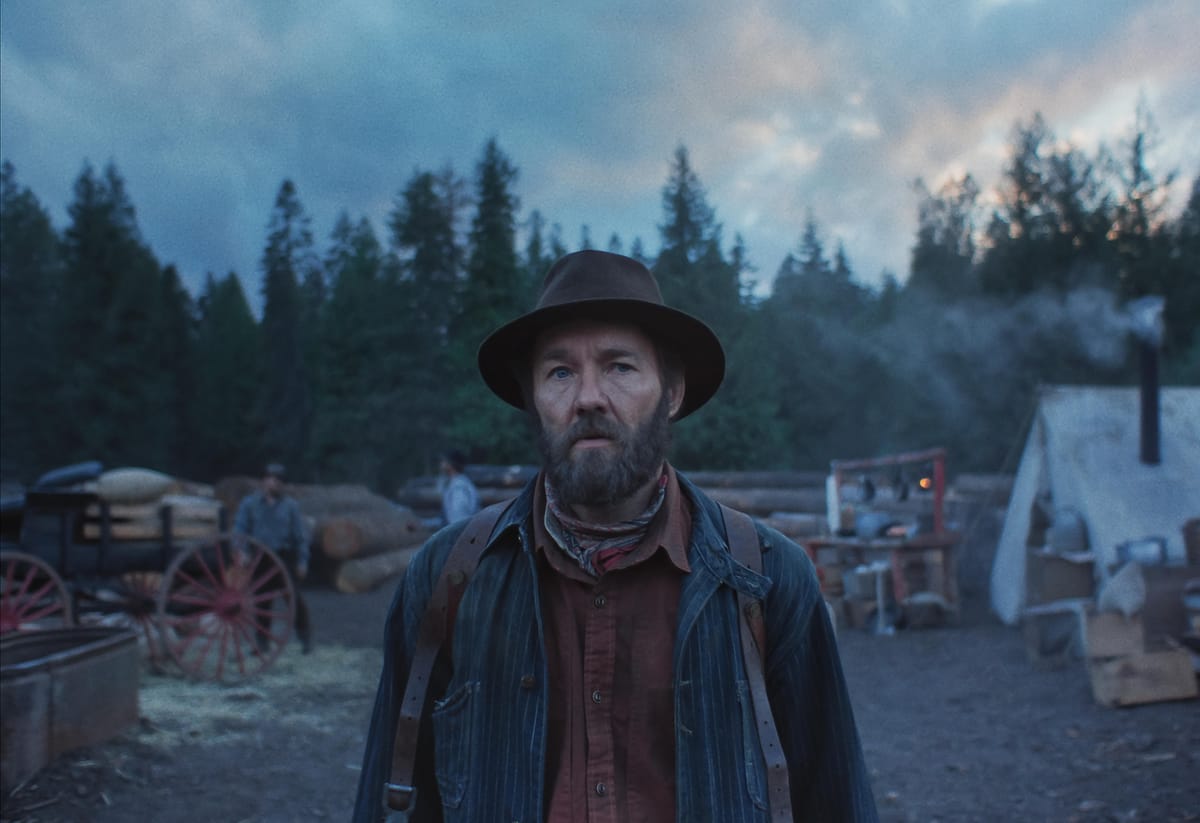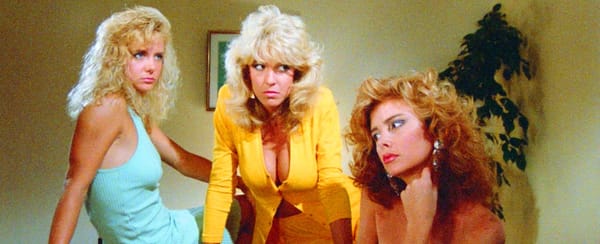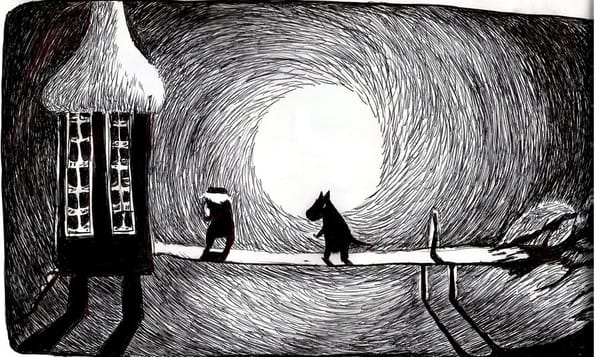What to Watch: "Train Dreams," "Listers" and more
One of the year's best comes to Netflix and a scrappy home-made documentary about birding takes YouTube by storm. Plus: Reviews of "Rental Family," "Wicked: For Good" and some bleak humor for a time of ICE.

One of the very best movies of the year lands on Netflix this week – and it’s possible that the service may be the worst place to watch it. Train Dreams (⭐ ⭐ ⭐ ⭐) is a quietly profound, intensely moving epic of one unimportant man’s life, and in a movie theater, with the dark wrapped around your head and your senses locked into the light pouring from the screen, it exerts a spooky and magical spell. I saw it at Sundance last January with an audience of industry professionals who filed out afterwards in silence, holding what felt like a nearly holy experience in the palm of their minds. People spoke of it in Park City with a thankful hush, but a few months later I watched it on the small screen with a few friends and for them it dried up on delivery. What with a theater audience is a lovely, patient accounting of a man’s passage through the world can be a non-starter after an evening meal with the lights on and one’s phone at the ready. I still say give it a go, because if you’re in the proper state of mind and metabolism, “Train Dreams” can leave you cleansed.
Based on a novella by Denis Johnson, the movie stars Joel Edgerton – a good actor with the knack of seeming anonymous – as Robert Grainier, a logger in the Pacific Northwest during the early half of the 20th century. Robert’s an orphan, a lumberjack, a railway worker and a hermit whose lifelong isolation is broken by five years of Edenic bliss with a wife, Gladys (Felicity Jones) and their young daughter Kate (Zoe and Rose Short). The movie spans the years from World War I to the late 1960s – from the final glimpses of the American frontier to the first glimmers of our modern era – and it’s narrated by actor Will Patton with a casual declarative grace. In its portrayal of one man’s journey through loneliness, love, despair and endurance, “Train Dreams” achieves some of the common poetry of “A River Runs Through It” and other stories of this country’s beauty and cruelty. (It also owes a debt or two to the work of Terrence Malick – which could be a come-on or a deal-breaker, depending on where you sit – and the score by Bryce Dessner of the rock band The National has a similar cosmic lilt.) Saying little and expressing much, Edgerton reminded me of Kris Kristofferson with the assurance replaced by uncertainty, and late in the movie there’s an appearance by Kerry Condon (“The Banshees of Inisherin”) as a similarly bereft woman whose scenes with Grainier could edge toward romance but instead become something rooted in the grace of shared losses.
The director is Clint Bentley, who works in partnership with Greg Kwedar – both men write, and they switch off directing and producing duties, with Kwedar helming last year’s Coleman Domingo-starring “Sing Sing” and Bentley’s previous “Jockey” playing at Sundance 2021. One of the remarkable tricks of “Train Dreams” is that it acknowledges modern feelings about race and deforestation without ever losing its sense of period. William H. Macy has a few scenes as a loquacious older fellow in the logging camps, and through him, as through Grainier, one feels the resilience of small humans in an immense and unforgiving landscape, plus a hard-won awareness of the connections that undergird everything. I love this movie enough that I’m a little disappointed in my friends for not appreciating it, the way you can be when people you like don’t quite get something you love. I suppose a good many folks will feel “Train Dreams” has failed them when they watch it on Netflix. I wonder if it might not be the other way around.
It's a good year for birding movies: “H is for Hawk,” an adaptation of Helen Macdonald’s 2014 non-fiction best-seller, will be in theaters before the end of the year (it stars Claire Foy and it’s quite good), the upcoming “Hamnet” pairs Jesse Buckley with a gorgeous marsh harrier in its early scenes, and Listers (⭐ ⭐ ⭐ 1/2) has been kicking up a happy fuss since it landed for free on YouTube in August. Best described as “Bill and Ted Go Birding,” “Listers” is as indie as they get, a film made with spit and duct tape by brothers Owen and Quentin Reiser, who decided between bong hits in late 2023 that birds were pretty cool and that it might be fun to spend a year driving around the lower 48 trying to beat the record for a “Big Year.” What did they know about birds in general and birding in particular? Nada, zip, zilch. How many species do you need to see in a 12-month period to break a Big Year record? Over 760 at present.
Spoiler: The Reiser brothers ended up making it to the mid-500s, which is Not Bad At All. (By comparison, it’s taken me 40 years to see 584 species.)

“Listers,” which comes with the subhead “A Glimpse into Extreme Birding,” clocks in at just under two hours, which is overstaying its welcome unless you break it up into pieces while you’re on a stationary bike (cough), but it is both genuinely funny and genuinely bird-y. To an extent, Quentin (who’s mostly on camera) and Owen (who’s mostly behind it) are just cosplaying Beavis and Butthead, since they take their mission seriously to the point of camping out in Cracker Barrel parking lots across the country in a crappy Kia minivan while capturing species like Vermilion Flycatchers, Painted Redstarts, Boreal Owls and the elusive Baird’s Sparrow in gorgeous close-up video footage. But they’re also newbies distanced enough to revel in the absurdities and paradoxes of Obsessive Birding and the people who practice it while maintaining a dude-acious respect for said birders’ knowledge and commitment.
“Listers” brings in many voices, some found on the brothers’ travels and others filmed later, and it parses the conflict between those who come to birding as a list-keeping competition and those who come for the beauty of the damn things. The movie is a thorough plunge into a subculture, entertaining for the casual viewer and deep-dish for the twitchers, and the fact that it looks so good and is edited so crisply on a budget of $3 and some pocket lint is even more impressive. I especially love that while an exhausted Quentin declares himself well and truly done with birding by the end of the brothers’ Big Year, as the end credits run he’s seen standing in a forest at dusk, quietly ID-ing one bird after another as they call in the distance. Birding, quite clearly, isn’t done with him.
Here's the trailer;
Oh hell, here's the movie – it's free, for Christ's sakes.
New in theaters:
Rental Family (⭐ ⭐ 1/2) is a sweet, sentimental and fairly soggy drama with a novel dramatic conceit: Philip Venderploeg (Brendan Fraser), an American actor living in Japan, pulls himself out of a career and personal funk when he gets taken on by a Tokyo firm that hires professional mourners and other imposters for a culture obsessed with social etiquette and allergic to confrontation. Philip’s first gig is posing as a wealthy fiancé whisking a woman off to marriage in Canada; in reality, she wants to hide her wedding to her girlfriend from her parents. His next job is pretending to be the long-vanished father of a little girl (Shannon Mahina Gorman) so she’ll have a “normal” enough family to get into an elite Tokyo prep school. Emotional bonding is not encouraged by his employers but emotional bonding occurs, of course – there wouldn’t be a movie if it didn’t. Fraser makes good on his recent Oscar win in “The Whale” with an endearingly fubsy performance – Di Caprio he’s not and never will be, but somehow that haplessness translates as a winning vulnerability onscreen, and if nothing else he's a great sight gag in this setting. The script, co-written by director Hikari, is as cooked-up as they come, but the situations are interesting enough to keep a viewer in for the duration, with subplots involving Philip’s boss (Takehiro Hira) and co-worker (Mari Yamamoto) that deepen our involvement. “Rental family” services do exist in Japan and other countries, and “Rental Family” the movie gently probes their uses, their hypocrisies, and the healing and damage they can leave in their wake. That it does all this without ever truly drawing blood is why it’s a crowd-pleaser rather than a genuinely great film. But, yes, it’s more than fine for an off-night rental when it comes to you on VOD in a month or so.
Wicked: For Good (⭐ ⭐) illustrates the perils of chopping one big honking franchise property into two parts, the better to fill the studio coffers: By the time the second half comes around after a year, people may have moved on. Or maybe this particular Part 2 is just a noisy, hyperactive dud. To my surprise, the first half of “Wicked” won me over when it came out last year – it was a 30-ton chunk of cubic zirconium that managed to get airborne on the strength of Cynthia Erivo’s soulful portrayal of Elphaba, a performance fueled by the hurt and resolve welling up in a woman condemned from birth to be an outsider. (And, yes, that a Black woman was playing a green-skinned Other added all sorts of resonances, intentional and otherwise.)
If “Wicked” was all tuneful set-up, the sequel – no, not a sequel, a back half – is the follow-through, so overloaded with action and extras and garish CGI sets and songs that float by mellifluously without ever lodging in your head that the movie all but short-circuits itself. The problem with a theme-park mega-property like this is that it has to make good on its promises of gigantism or the audience will go home unsated – and yet that gigantism can overstimulate a viewer into a kind of protective crouch. I felt my nervous system shutting down after about 30 minutes of this movie and spent the rest in a state of torpor, if only to ride the thing out.
Clearly, I am not the audience for this movie. But who is? Fans of Ariana Grande-Butera, whose conflicted mean-girl/good-girl Glinda takes over most of the running time of “For Good”? Theater kids who want an extended-play version of the Broadway musical? Jeff Goldblum completists? Interestingly, there’s a darkness at the center of this franchise that director John Chu and company seem intent on simultaneously calling to our attention and hustling us away from. It was there in Gregory Maguire’s original 1995 novel, a grimly compelling meditation on the nature of evil that cast Elphaba in shades of moral complexity and encouraged the reader to find parallels between Oz and Hitler’s Germany. All that is there but dormant or Disneyfied in “Wicked: For Good” – defanged by Broadway and Hollywood and the need to provide audiences with a good time while making sure they don't have to think if they don't want to.

So, sure, the Wizard is a monster and a fascist but as played by a fine, miscast Goldblum, he’s a loveable one. And the people of Oz constitute a brainless mob easily swayed by propaganda but we’re encouraged to find them more comical than terrifying. And so on. But how could it be otherwise? Few people are willing to pay multiplex money for a musical that reflects our current disaster in ways only Gregory Maguire could have predicted. But the flying monkeys are here and they’re staffing the White House, and the cognitive dissonance of “Wicked: For Good” lies in the contortions it undergoes to have us forget that. As I watched the movie, the word “ormolu” kept flitting through my mind, and I had to look it up after the end credits rolled, because I didn’t quite remember what it meant. It refers to decorative objects made of bronze that have been lightly coated with gold, which, honestly, couldn’t better describe what it feels like to sit through this film.
It'll make pots of money, of course, and I’m an aging, art-film-loving churl. Move along, nothing to see here.
Since the Washington Post axed its freelance budget last month, I’ve been keeping busy elsewhere, including dipping my toe back in the waters of the Boston Globe, where I wrote a humor piece this week about that nasty little snotrag who called ICE in on our local car wash. Paid subscribers can read it after the jump; others can find it at the Globe’s website.





